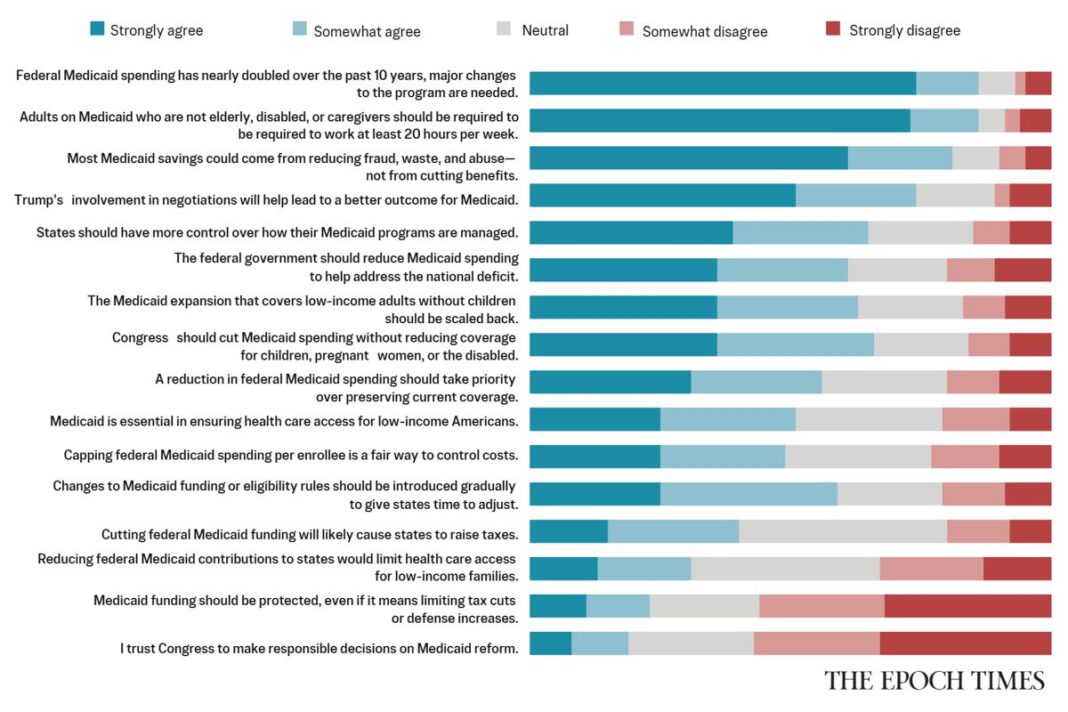Readers of The Epoch Times support work requirements and fraud crackdowns, but fear Congress will mishandle reforms.
A new Epoch Times poll reveals strong support for reforms to the federal Medicaid program, including work requirements and fraud reduction, while also highlighting deep skepticism about Congress’s ability to implement those changes responsibly.
The survey, which garnered 18,369 responses, comes as lawmakers debate a series of proposals to rein in the federal government’s ballooning Medicaid budget—now exceeding $800 billion a year across both federal and state budgets, including over $600 billion in federal spending alone.
Among the most hotly debated ideas are reducing the federal share of state Medicaid costs, tightening eligibility rules, imposing new work requirements, and capping federal spending per enrollee. These proposals have divided Republican lawmakers, with moderates warning of political backlash from constituents who rely on the program, and fiscal hawks pushing for aggressive cost-cutting to rein in deficit growth.
The Congressional Budget Office has analyzed the projected impact of five potential Medicaid reforms. Depending on which combination is adopted, the federal government could save between $170 billion and $860 billion over the next decade. But those savings would come at a steep cost: as many as 8.6 million people could lose coverage, with nearly 4 million potentially becoming uninsured.
Against this backdrop, the Epoch Times poll offers a snapshot of where readers stand. Through both structured survey responses and more than 10,000 open-ended comments, the results suggest strong support for targeted, accountability-driven reforms—yet caution against sweeping changes that could disrupt care for vulnerable Americans.
Work Requirements, Waste Reduction, and Medicaid’s Expanding Cost Footprint
Medicaid currently covers over 90 million low-income Americans through a joint federal–state partnership. While the federal government provides broad oversight and a significant share of the funding, states administer the program and determine eligibility rules, provider payment rates, and benefit options.
Program costs have surged—particularly since the Affordable Care Act (ACA) expanded eligibility in 2014 to include most low-income adults earning up to 138 percent of the federal poverty level, regardless of parental status. Today, roughly 21 million people are covered through this expansion. For these enrollees, the federal government covers 90 percent of the cost, compared to between 50 and 77 percent for traditional Medicaid recipients, depending on the state.
By Tom Ozimek








